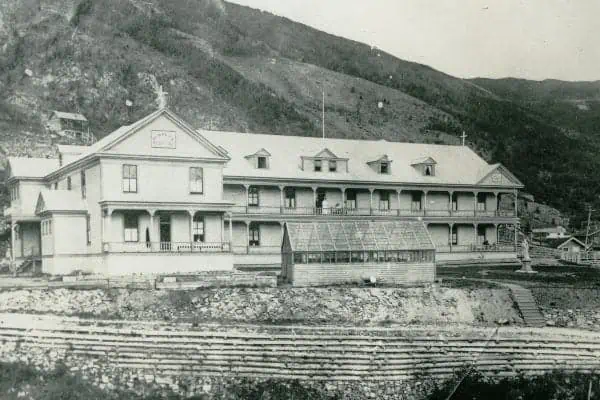The late Dick North used to quip that with a surname like his it was no mystery that he worked as a journalist in the Yukon.
North was inexorably drawn here, telling me the first time I interviewed him in 1986 that Jack London’s stories fascinated him as a child.
In 1954, after serving in World War II and attending colleges from Washington to California, North found himself in the First and Last Chance Saloon in Oakland, talking about London with the son of the original owner, who had sponsored London in his college days. Even then, he wondered if London’s Yukon cabin that birthed so much fiction still existed.
Fast-forward 14 years and North was working for the Alaska Daily Empire. He gave himself a treat by canoeing down the Yukon River.
On that trip he learned that London’s cabin probably still existed, and a few years later he was instrumental in organizing an expedition to find it.
He was also instrumental in striking a deal that would see half of it relocated to Dawson’s Jack London Square where, in 1987, it would finally be developed into today’s Mecca for London enthusiasts.
North’s own collection of memorabilia is featured prominently in Jack London Square and he was its chief interpreter until ill health forced his retirement in 2009.
But London was just the tip of the iceberg. There was scarcely a Yukon mystery or adventure from the first half of the 20th century that Dick North did not research and put between covers.
The strange tale of Albert Johnson inspired North to write The Mad Trapper of Rat River and Trackdown, the best works about the life and identity of the enigmatic recluse. Later he would attempt to understand the man in a novel, The Man Who Didn’t Fit in.
After watching caribou moving in Alaska, he wrote Arctic Exodus, about the great reindeer drive of 1929.
After visiting Dawson City, North delved into the tale of the North-West Mounted Police’s doomed dogsled journey of December 1910. Led by Inspector Francis Fitzgerald, the Mounties left Fort McPherson bound for Dawson, but became disoriented. North recounts this tragic tale in The Last Patrol.
Dick North eventually returned to Jack London, writing a small booklet about the finding of the cabin and eventually incorporating that story into a memoir that tracked London’s Yukon trail and his own efforts to trace it. Sailor on Snowshoes is a fascinating book.
During the last 15 years of his life, Dick North was a Canadian citizen, having spent many years living in both Whitehorse and Dawson City.
A quiet man who cared more about the stories he wrote than his reputation, he always seemed surprised when honours came his way, yet come they did.
The Yukon Order of Pioneers made him a member. The Klondike Visitors Association honoured his work. In 2003 he received a Commissioner’s Award for Public Service. One of the streets in the Dawson’s Dome Subdivision was named for him in 2004 and his work was celebrated as an entry in that year’s Discovery Days parade.
In 2008 he was made a Member of the Order of Canada and in that same year he was presented with a special Commissioner’s Certificate in further recognition of his work.
Dick North left us on September 23, 2013, but his impact on the territory and its history will remain for years to come.




